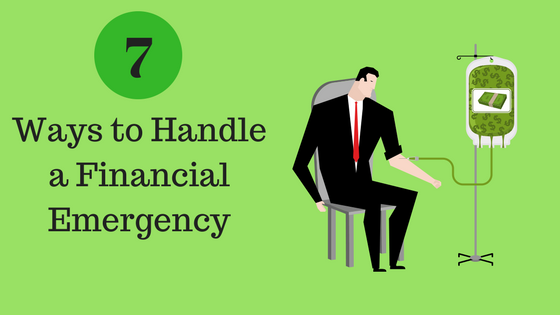
Thanks to Murphy’s Law, financial surprises happen to all of us. Sometimes no amount of planning is enough. Your car, home, and pets are all at risk of being stricken by unexpected calamities. An ill family member or unexpected funeral travel is another common setback.
If you haven’t read some of our previous articles about establishing an emergency fund, you may need to turn to short-term financing to bridge the gap. With so many options available, how do you determine which will best address your needs? While you have little choice in the type of emergency, you can choose a temporary solution that won’t put you in a permanent financial hole.
Consider these options when you have a financial emergency:
1. Payday loans
The types of payday loans that are allowed can vary significantly from state to state. Read all of the terms and conditions ahead of time, especially the fine print. Payday loans look at your recent paystubs to determine the amount you’re eligible for. Some might require paying off the loan with your next paycheck, while others offer repayment periods of several weeks.
• Being short term and without collateral, this type of loan has extremely high fees. This type of financing is not recommended and should only be used as your last resort! Be sure to do everything you can to pay it back immediately.
2. Unsecured personal loan
This a fairly traditional loan from a bank or credit union. They don’t require collateral, but the trade off for that is a much higher interest rate. Only obtain such a loan if you can pay it off within the term period. If you can’t, see if you can transfer the balance to a credit card with a lower rate.
3. Secured loans
These are the same as the previously mentioned loan, except secured by collateral. Since the lender has some collateral, they will offer a longer term and a lower interest rate. If you have a vehicle or boat that’s in good shape, this can work.
• You will lose your collateral if you fail to pay back the loan. These loans are less risky, but not if you lose your car!
4. Credit cards
Most credit cards allow you to obtain a cash advance. This is a way to turn a line of credit into cash quickly. Use them with caution though as they do come with higher interest rates and fees.
5. Direct deposit advance
Similar to a payday loan, if your paycheck is deposited directly to your bank, they will extend you a temporary loan until the next paycheck appears in your bank account to cover the balance. Contact your bank branch to see if this an option for you.
6. Home equity line of credit
Also known as a HELOC. If you have a decent amount of equity in your home, you can set up a line of credit to tap into whenever you need. Talk to your bank about your options. You will need home equity and a good credit score. If you just took out a mortgage, you probably won’t get much.
• The interest rate will be higher than your mortgage rate, but much lower than a credit card and you won’t have to pay a bunch of fees to secure the loan once your line of credit is established.
7. Savings
Cash is king in an emergency. This is why having an emergency fund is so important. Having a savings account that you can tap into on short notice and then replenish with monthly savings is just about always the best option.
The Bottom Line
Every situation is different, but in general the less you have to pay for the privilege of getting money to spend, the better. This is why cash is king. It’s your money, so you just spend it. No interest. No fees. Other options exist but do everything in your power to avoid them. The best way to do this? Plan ahead. Don’t let the prospect of an unexpected expense keep you up at night. Be sure to have your emergency fund in place when you need it.


